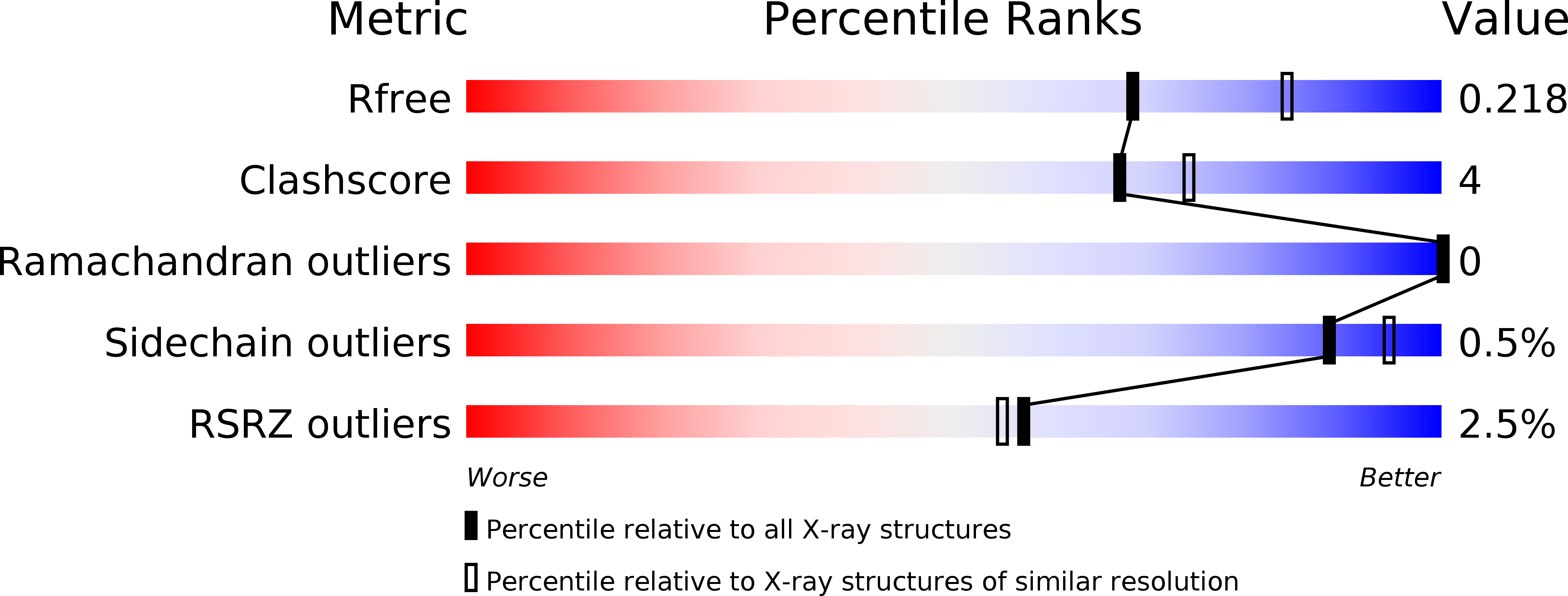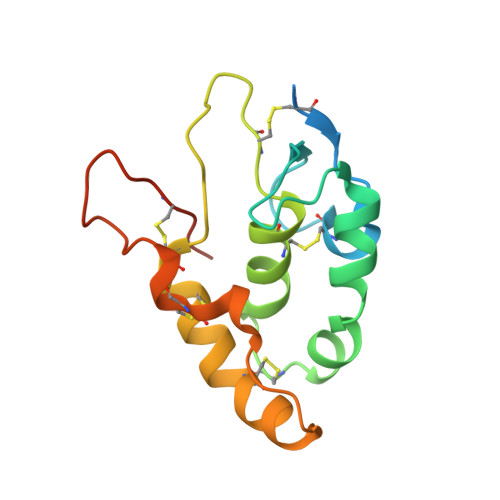Unsaturated fatty acyl recognition by Frizzled receptors mediates dimerization upon Wnt ligand binding.
Nile, A.H., Mukund, S., Stanger, K., Wang, W., Hannoush, R.N.(2017) Proc Natl Acad Sci U S A 114: 4147-4152
- PubMed: 28377511
- DOI: https://doi.org/10.1073/pnas.1618293114
- Primary Citation of Related Structures:
5T44, 5URV, 5URY, 5URZ - PubMed Abstract:
Frizzled (FZD) receptors mediate Wnt signaling in diverse processes ranging from bone growth to stem cell activity. Moreover, high FZD receptor expression at the cell surface contributes to overactive Wnt signaling in subsets of pancreatic, ovarian, gastric, and colorectal tumors. Despite the progress in biochemical understanding of Wnt-FZD receptor interactions, the molecular basis for recognition of Wnt cis -unsaturated fatty acyl groups by the cysteine-rich domain (CRD) of FZD receptors remains elusive. Here, we determined a crystal structure of human FZD7 CRD unexpectedly bound to a 24-carbon fatty acid. We also report a crystal structure of human FZD5 CRD bound to C16:1 cis -Δ9 unsaturated fatty acid. Both structures reveal a dimeric arrangement of the CRD. The lipid-binding groove exhibits flexibility and spans both monomers, adopting a U-shaped geometry that accommodates the fatty acid. Re-evaluation of the published mouse FZD8 CRD structure reveals that it also shares the same architecture as FZD5 and FZD7 CRDs. Our results define a common molecular mechanism for recognition of the cis -unsaturated fatty acyl group, a necessary posttranslational modification of Wnts, by multiple FZD receptors. The fatty acid bridges two CRD monomers, implying that Wnt binding mediates FZD receptor dimerization. Our data uncover possibilities for the arrangement of Wnt-FZD CRD complexes and shed structural insights that could aide in the identification of pharmacological strategies to modulate FZD receptor function.
Organizational Affiliation:
Department of Early Discovery Biochemistry, Genentech, South San Francisco, CA 94080.
















